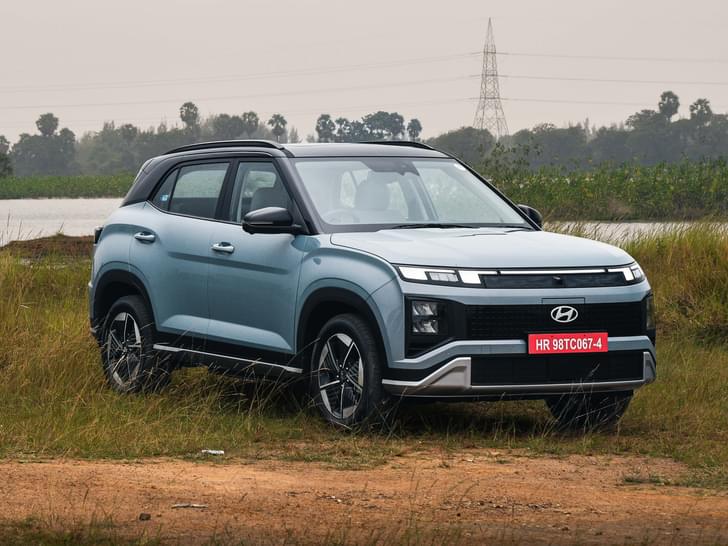Hyundai has released the first set of teasers for its upcoming next-gen Verna sedan. The all-new Verna, internally known as BN7i, will go on sale by May 2023. The manufacturer has opened bookings for the new Verna at Rs 25,000. Along with releasing the teasers and booking details, Hyundai has also shared information on the new Verna’s powertrain and variants.
- New Verna to go on sale by May 2023
- Will be petrol only
- Bookings open for Rs 25,000
New Hyundai Verna: what do the teasers show
The new Hyundai Verna sports a completely new design and, as the teasers show, the styling has been influenced by quite a few latest-gen Hyundai sedans.
First up, the new Verna gets a striking nose with a double layer headlamp set-up that's also seen on the latest-gen Hyundai Grandeur sedan sold overseas. The grille is almost as wide as the car and has multiple cuts and creases. The grille inserts are quite similar to the ones seen on the Tucson SUV and the current-gen Elantra sedan, which isn’t on sale in our market. The new Verna also gets a full-width horizontal light bar that will serve as the LED daytime running lamp – a design detail seen on other Hyundai models like the Staria MPV and the Grandeur sedan.
Moving on to the sides, the new Verna gets more cuts and creases than its predecessor and has a sportier notchback look than a conventional sedan. Expect more creases on the doors and fenders, similar to other Hyundai sedans sold overseas.
At the back, the new Verna gets unique looks with the tail-lamps protruding outwards. The tail-lamps are connected with an LED light bar and have crystal like inserts. Additionally, the light bar gets two vertical extensions on each side, giving the car a unique look. Although Hyundai hasn't confirmed it, the same set-up could be present on the Verna’s front design too.
New Hyundai Verna: powertrain, variants and colours
Along with revealing the new Verna’s design partially, Hyundai India also announced powertrain details for the new sedan – two 1.5-litre petrol engines. First is an all-new 1.5-litre direct injection turbo-petrol, which will churn out around 160hp. This engine will come mated to either a 6-speed manual or a 7-speed DCT. This unit will eventually duty on most Hyundai-Kia models in India like theCreta,SeltosandCarens, and replace the 1.4-litre turbo petrol engine.
A 1.5-litre naturally aspirated petrol will be the entry-level engine for the Verna and come with either a 6-speed manual gearbox or an IVT CVT automatic. This engine is expected to be the same powerplant that sees duty on the Creta, Seltos and Carens currently.
There will be no diesel engine option on the next-gen Hyundai Verna, which means that the midsize sedan segment will now be petrol-only as no other rival has a diesel engine on offer. Hyundai has also confirmed that the new Verna’s engines will be RDE as well as E20 (20 percent ethanol blend) compliant.
As far as variants go, the new Verna will be sold in EX, S, SX and SX(O) trims. We expect the 1.5-litre TGDI engine to be available on the higher trims, while entry level trims will make do with the 1.5-litre NA unit.
Hyundai will sell the new Verna in seven single tone and two dual-tone exterior paint options. The brand says that there are three new paint options – Abyss Black, Atlas White, Tellurian Brown – on the sedan.
New Hyundai Verna: pricing and launch details
With bookings currently open, expect Hyundai to reveal more details on the new Verna in the coming days, with a price announcement taking place before May this year. The new Verna is said to enter series production in the coming months and, when compared to its predecessor, will be a much stronger rival to the VW Virtus, the Skoda Slavia, the upcoming facelifted Honda City sedan and the ageing Maruti Suzuki Ciaz. Expect the new Verna to be pricier than the outgoing model, especially due to the new 1.5-litre turbo petrol engine.
Also see:
Hyundai Creta EV in the works






































